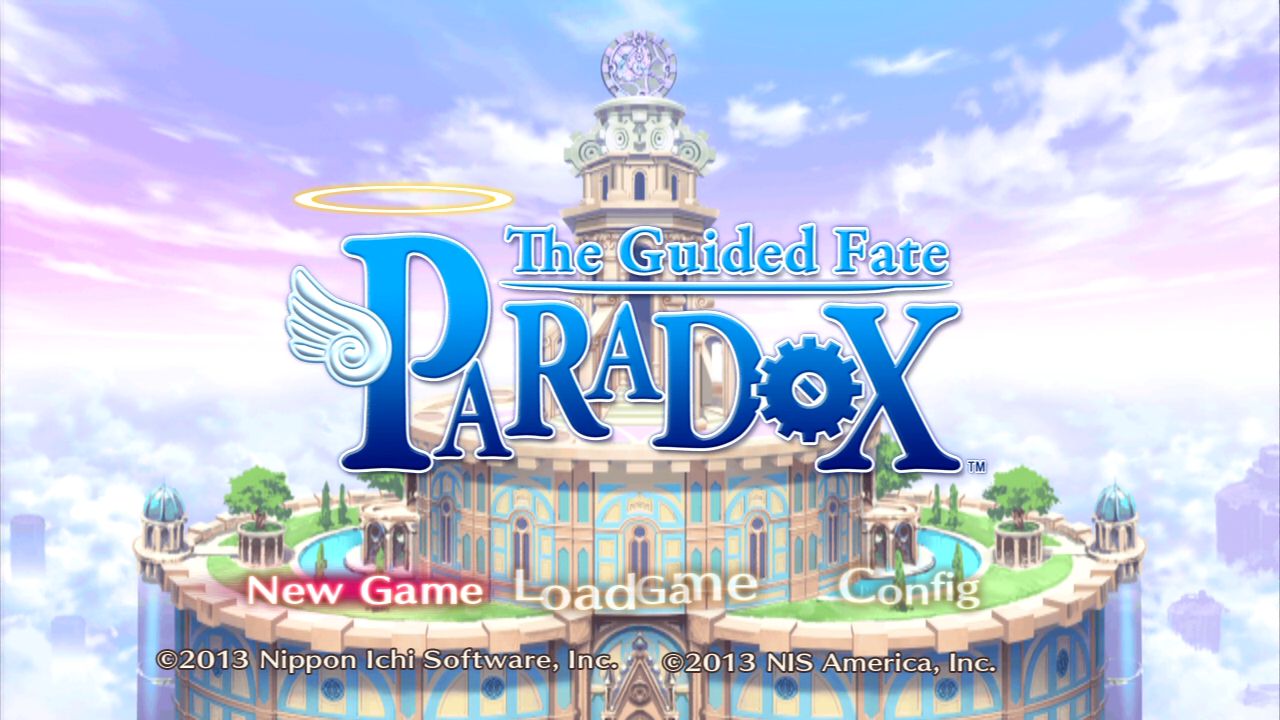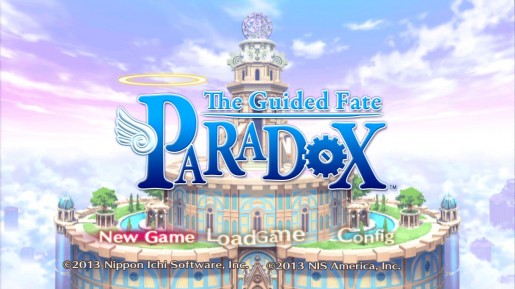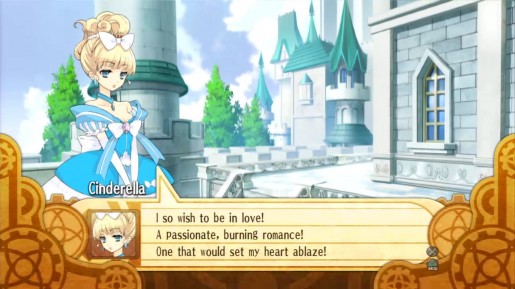Three years ago, Nippon Ichi broke away from their traditional strategy role playing formula and instead focused on a new style of rpg with only a single playable character. The first (and only) title with that new style was Z.H.P. Unlosing Ranger VS Darkdeath Evilman, a Playstation Portable exclusive. Now with so many other styles of role-play under its belt, Nippon Ichi has returned to this original style with the upcoming PS3 release, The Guided Fate Paradox. With many improvements over the original formula, Nippon Ichi strives to make a better game all around.
Enter Renya Kagurazaka, all around average high school student with only one discernable trait: poor Renya has never won a prize in his life. All of that changes the moment he enters a department store raffle on a whim. In a moment of divine grace, Renya finds himself winning the sole prize in the entire raffle. That prize in question? The ‘opportunity’ to become God. While any other game or movie would focus upon the whole breadth of a God’s abilities and responsibilities, The Guided Fate Paradox instead focuses on the power to grant a believer’s wish in times of need.
Through the use of an aptly named Fate Revolution Circuit, Renya is able to enter the wishes of those in need. To grant these wishes, the player, by directly controlling Renya, will have to explore into the Original World and Copy World formed around those wishes. The Original World is exactly that, the plane of being where both the wishtaker and God can co-exist and interact with one another. The Copy World on the other hand is where Renya can interact with any sort of resistance or obstacles preventing him from ‘guiding fates to a revolution’, Renya’s overused catch phrase. By interacting with the Copy World, Renya can directly affect the wisher’s desires and hopefully fulfill their single desire, even if it takes a few tries to get that figured out. Each wisher has their own desire and as such, every person will have their own custom world to go through that’s randomly generated every time Renya enters the machine. Cinderella offers a castle motif, whereas a wishing mermaid would have an undersea themed level or a pair of librarians might have a level focused around giant libraries. Each wish brings a distinct style to those chapters.
Renya’s first task as God is to grant the wish of a particular soon-to-be princess Cinderella. By now, most people that would play The Guided Fate Paradox have already heard of Cinderella’s story, the mistreatment of her step-sisters, the prince’s ball, the one opportunity to meet the prince before the clock strikes midnight. What Renya has to do is fix Cinderella’s discontent with the entire situation. In this particular instance, Cinderella has become self aware of the endless cycle her life goes through, much like every time a child reads her story. Renya’s task is to rewrite the story so that Cinderella and her prince do not simply share just one night in the castle. How can one rewrite a storytale that’s already in the hearts of many? By playing God, of course.
To cause any lasting effect on the fates of those he encounters, Renya makes use of the Fate Revolution Circuit to transport himself directly into those wishes. That’s where the bulk of gameplay will tend to take place. For those familiar with the original title The Guided Fate Paradox takes its inspiration from, much of the core gameplay will feel familiar, even after a few year hiatus. For those that haven’t had the chance to get their hands on a PSP might have heard of a similar series known as Mystery Dungeon. This series has had numerous reincarnations across a wide range of systems, from ATLUS’ Izuna series to the more recent Pokemon Mystery Dungeon games. These games bring a fresh spin on the styles of Nethack or other roguelike entries. Other mechanics from the Disgaea series also show up, including the ability to pick up and throw enemies.
Consider a tactical RPG where your units in tow are simplified to just a single combatant, greatly adjusting the tactics away from those that prefer to play with a more balanced group. As such, the typical round-robin set of turns are streamlined as well. Rather than taking turns one at a time, players will guide their single character, in this case Renya, around with one action before EVERY other unit on the map moves simultaneously. Whether it’s taking a step forward, swinging a weapon, or chugging an emergency potion, players must be prepared to see through the effects of whatever enemies are in the vicinity. With a limited scope of visibility, it can sometimes be impossible to gauge just what lies in wait as you work your way through each floor.



